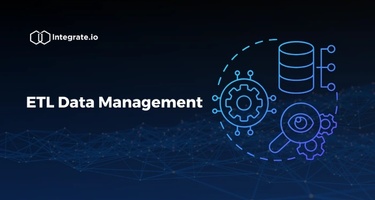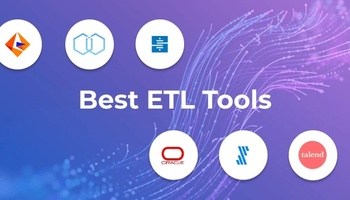- Understanding ETL and Its Role in Data Analytics
- The Challenge of Building Data Pipelines
- Why Integrate.io is Ideal for Mid-Market Companies
- Integrate.io’s ETL Capabilities: Key Features
- Modernizing Legacy Systems
- Ensuring Security and Compliance
- Practical Use Cases for Mid-Market Companies
- ETL Best Practices for Data Analysts
- Future of ETL: Trends to Watch
- Conclusion
- FAQs
In the fast-evolving world of data analytics and data models/machine learning applications, the power of a well-structured ETL (Extract, Transform, Load) pipeline cannot be overstated. Data analysts in mid-market companies often grapple with transforming large data sets from disparate data sources into actionable insights.
Here’s where ETL platforms like Integrate.io emerge as the unsung heroes, simplifying complexities with low-code and scalable solutions.
Key Takeaways
-
The nuances of efficient ETL practices and practical use cases using Integrate.io.
Understanding ETL and Its Role in Data Analytics
ETL is the backbone of modern data analytics. It involves:
-
Extracting source data (databases, APIs, files).
-
Transforming this data into a consistent format suitable for analysis.
-
Loading it into a destination like a data warehouse or business intelligence tool.
Unlike the older, siloed approaches to data management, ETL centralizes data, ensuring that businesses can leverage it effectively for analytics, forecasting, and decision-making. Integrate.io, with its no-code pipelines and 220+ transformation capabilities, brings unparalleled ease to these processes.
The Challenge of Building Data Pipelines
Building robust data pipelines is not without its challenges:
-
Diversity of Data Sources: Companies often use varied tools like Salesforce, Google Analytics, or legacy databases. Integrate.io supports 200+ native connectors, including REST APIs for lesser-known sources.
-
Scalability: Data volumes can grow exponentially. Integrate.io’s cloud-based architecture auto-scales to handle increasing loads seamlessly.
-
Data Security and Compliance: With stringent regulations like GDPR and HIPAA, ensuring data security is critical. Integrate.io is SOC 2 certified and employs AES-256 encryption, field-level encryption, and masked transformations to protect sensitive data.
Why Integrate.io is Ideal for Mid-Market Companies
Mid-market companies need solutions that balance cost, functionality, and ease of use. Integrate.io is one of the ETL tools that excels in these areas:
-
Low-Code Interface: Its intuitive drag-and-drop UI enables even non-technical users to build pipelines without coding.
-
Cost-Effective Scaling: Pay-as-you-grow pricing ensures that small to medium-sized businesses aren’t overburdened by high initial costs.
-
Comprehensive Support: Integrate.io provides 24/7 customer support, helping businesses resolve issues quickly.
Integrate.io’s ETL Capabilities: Key Features
a. Data Extraction
Integrate.io simplifies extraction with native connectors to major SaaS platforms, databases, and cloud services. Its REST API connector allows for integrating custom or niche data sources.
b. Data Transformation
The transformation process is where Integrate.io shines. With over 220 low-code operations, users can:
-
Normalize or standardize data formats for improving data quality.
-
Aggregate data for summary reports.
-
Mask or encrypt sensitive fields like Personally Identifiable Information (PII).
c. Data Loading
Whether your data storage destination is a cloud data warehouse (e.g., Snowflake, Redshift) or a business application like Salesforce, Integrate.io ensures that you load data accurately and efficiently. It also supports reverse ETL, enabling you to push processed data back to SaaS applications for operational workflows.
Modernizing Legacy Systems
Many mid-market companies struggle with legacy systems. Modernizing these requires:
-
Decoupling Monolithic Systems: Replacing rigid, hand-coded pipelines with modular, agile solutions like Integrate.io.
-
File-Based ETL: For those reliant on file exchanges (e.g., HRIS systems), Integrate.io handles SFTP connections, file transformations, and sharing seamlessly.
-
Enabling Real-Time Data Analytics: By incorporating CDC (Change Data Capture) and micro-batch processing, Integrate.io minimizes latency of large volumes of data. Because, only the new data is synced everytime there is a change in the schemas in source systems.
Ensuring Security and Compliance
Security breaches can erode customer trust and result in hefty fines. Integrate.io takes a proactive approach:
-
SOC 2 and GDPR Compliance: The platform is regularly audited and adheres to global data privacy standards.
-
Field-Level Security: Data encryption (AES-256) ensures that sensitive information is secure both in transit and at rest.
-
Ephemeral Data Management: Temporary data is auto-deleted post-processing, reducing exposure.
Practical Use Cases for Mid-Market Companies
a. Business Intelligence Preparation
ETL pipelines transform raw data into dashboards for BI tools like Tableau or Power BI. Integrate.io enables seamless data aggregation and formatting for insightful visualizations.
b. Operational Analytics
From Salesforce CRM data to SFTP file exchanges, Integrate.io supports near real-time updates, allowing operational teams to stay informed.
c. Customer 360 View
Integrating diverse data sources like marketing automation tools, support tickets, and product usage data, Integrate.io helps businesses build a unified customer view, enhancing personalization.
ETL Best Practices for Data Analysts
For big data analysis, keep in mind the following best practices for data warehousing from different sources.`
-
Start with Clear Goals: Define the business questions your pipeline will answer.
-
Minimize Data Movement: Only extract and transform the data you need.
-
Automate Monitoring: Use Integrate.io’s built-in monitoring to catch errors early.
-
Optimize for Performance: Schedule pipelines during off-peak hours and leverage cloud-native scaling.
-
Document Transformations: Maintain a clear lineage to understand how data is processed.
Future of ETL: Trends to Watch
-
ELT (Extract-Load-Transform): Shifting some transformations to the destination/data repository for performance gains.
-
Low-Code/No-Code Dominance: Tools like Integrate.io are democratizing ETL by lowering technical barriers.
-
AI in ETL: Predictive transformations and anomaly detection are poised to revolutionize data pipelines.
Conclusion
Data is the lifeblood of decision-making in today’s digital era, and a robust ETL strategy is the foundation for deriving value from it. Integrate.io’s low-code platform not only simplifies the process but also ensures security, scalability, and compliance for mid-market businesses.
As a data engineer with two decades of experience, I can confidently say that Integrate.io combines the reliability of traditional ETL with the agility required for modern data challenges. If you’re seeking a future-proof solution to streamline your data pipelines, look no further. To get started with automating your data, schedule a time to speak with one of our Solution Engineers here.
FAQs
1. What is a data pipeline ETL process?
A data pipeline ETL process involves extracting data from multiple sources, transforming it into a consistent format or structure, and loading it into a destination system like a data warehouse for analysis. ETL pipelines are automated workflows designed to handle large-scale data integration efficiently.
2. What is ETL in data?
ETL (Extract, Transform, Load) is a data integration process that extracts raw data from various sources, transforms it into a usable format through cleaning and restructuring, and loads it into a target system such as a database, data lake, or data warehouse.
3. What does ETL stand for in data?
ETL stands for Extract, Transform, Load, which describes the three sequential steps in the data integration process to consolidate and prepare data for analytics or operational use.
4. What is ETL data?
ETL data refers to data that has gone through the Extract, Transform, Load process to be standardized, cleaned, and formatted for storage in a central repository like a data warehouse, making it ready for analysis and business insights.










